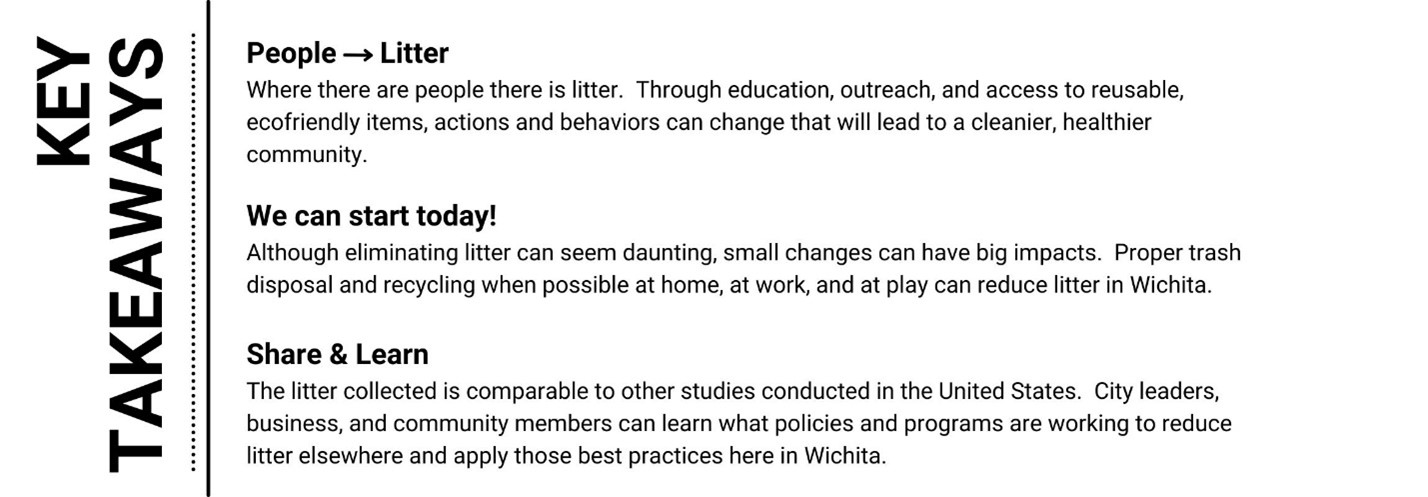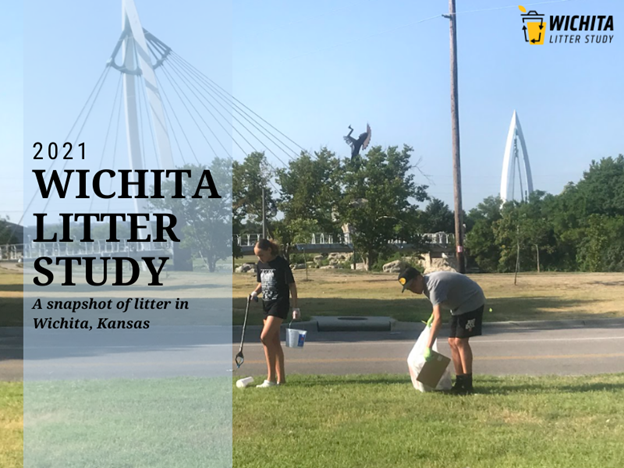The EPA’s Trash Free Waters indicates that 80% or more of trash in waterways comes from land-based sources. Solid waste that is improperly disposed of threatens the health of drinking water, soils where we grow food, wildlife, aquatic ecosystems, public health and the economy. In order to positively impact the litter problem in the U.S., many state, county and city governments are considering a variety of approaches to reduce the negative community impacts of litter. Policy actions include, but are not limited to, fees, incentives, bans and recycling programs. Studies are starting to show that single-use plastic or other litter policies can have positive economic, social and environmental impacts on communities.
In February of 2020, the Wichita City Council appointed a Task Force to investigate the environmental and economic challenges and benefits of potential policies regulating single-use plastics and litter. Before enacting policy, the City of Wichita requested a study that would provide a picture of litter in Wichita to be able to tackle this environmental challenge head-on with effective policy while avoiding unnecessary regulation.
To provide a snapshot of litter in Wichita, the EFC conducted a study to begin to answer questions about litter types, locations and sources in Wichita.
After participating in training, 70 local citizen scientists collected litter data at 12 parks within the city limits of Wichita. The locations represented a wide variety of terrain, land use, and surrounding activities and many were adjacent to waterways that lead to the Arkansas River. The locations will help inform the City and the community of the impact of trash, not only on land, but in our waterways.
Citizen science volunteers documented the types, materials, conditions, and quantities of litter found at each collection site. In total, 1,765 larger pieces of litter were collected, categorized and counted during the collection events. Smaller pieces of litter, collected in containers and measured by volume, made up an additional 30 gallons of litter. 47% of litter data was plastic and 75% of the plastic collected was from the food and beverage industry. Data analyses support the hypothesis that where people congregate, more litter is found despite the presence of trash bins.
The data collected in this study tells us that Wichita’s litter is comparable in quantity and type to other communities who have done similar studies. Using the 2021 Wichita Litter Study, we can borrow, share and test ideas to find the practices that work best for Wichita to reduce litter in our community.
Recommendations for prevention and reduction of litter include continued research into long-term solid waste management adjustments, adaptations to landscaping and maintenance plans and community and business outreach and education.








